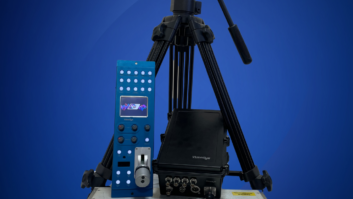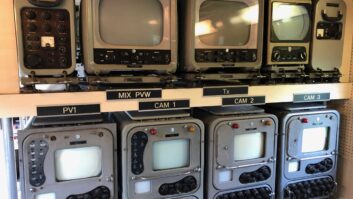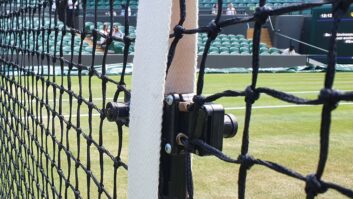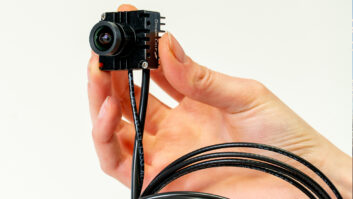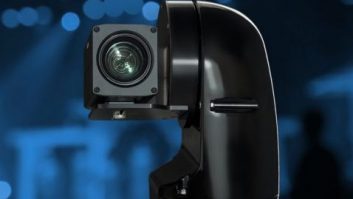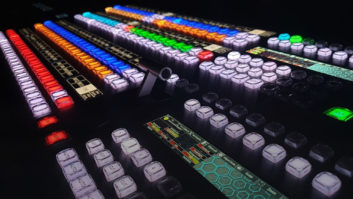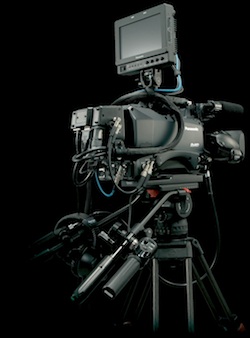
Affordability is key to the new wave of HD broadcast cameras on the market – our starting point for this year’s Acquisition Special. As in previous years, TVBEurope is the only industry platform tracking new developments in the camera space. By David Fox.
Grass Valley’s LDK 3000 is the first mainstream system camera using a CMOS sensor. Not only does it make HD more affordable than using comparable CCDs, but Grass Valley believes that CMOS is the way forward because it also has the potential to produce very high dynamic range images. The sensors are the same Xensium imagers that were developed by Grass Valley in conjunction with Thomson Silicon Systems for its Infinity camcorders.
More than 100 LDK 3000s have been delivered so far, for applications ranging from small studios to outside broadcast. Due to its lower pricing, Grass Valley is also targeting production facilities that are under pressure to migrate from SD to HD and need to replace a lot of cameras.
Europe and Japan have a new rival in the broadcast HD camcorder market, with the new DataCam E2HD HDC-680MP from China’s HDAVS. The high-spec, shoulder-mounted model records I-frame 4:2:2 MPEG-2 at 100Mbps, and is part of a line up of production equipment that includes an editor. The system is also compatible with MXF, Avid’s DNxHD editing format, and can also record MPEG-2 IBP at 25-80Mbps, 4:2:0 SD.
It uses a new storage medium, E2, which can be either solid state for reliability or hard disk for economy and size. Or both, as it can record to two of either drive in mirror mode, for security, or sequentially, for extra long recording sessions (five hours in HD with a 320GB disk). The drives fit into a unique tilt-out mechanism, and are hot-swappable with recording moving to the other drive. They can then be edited from directly.
It uses three 2/3-inch 2.3megapixel IT CCDs made by Panasonic, with 14-bit A/D conversion, and has eight digital audio inputs and three analogue audio inputs, recording to four audio channels. It also features: eight seconds pre-recording; anti-shock mounts so that the E2 drives continue recording despite vibration; 40W power consumption during recording (36W standby); S/N ratio higher than 60dB; and skin tone correction/contour softening.
It was shown for the first time outside Asia at IBC, where visitors particularly liked its handling of skin tones. It should cost about $40,000 – although HDAVS has no European distributor yet.
On the dock
Hitachi’s dockable HD1000 range can be fitted different backs, including a P2 recorder, and now a new digital triax system. It uses a Hitachi patented 10-bit codec based on H.264. “It’s a very low delay codec – under 14 milliseconds, and has a transmission rate of 170 megabits per second. It’s perfectly scalable for existing triax infrastructure, but the picture quality is equal to fibre,” claimed sales engineer, Jussi Simonen. It can also use coax cable if necessary.
The range also gains a new 720p camera head, the SK-HD1000-S4, which uses new high dynamic range 2/3-inch CCD sensors (previously the HD1000 had been 1080i only). It also has two built-in motorised Optical Filter Wheels with five settings (5xND, 5CC). “Now the customer has the choice between two types of heads and several types of backs. If you are an OB van company, for example, you can be broadcasting with fibre and can quickly go to P2 for recording or go wireless.”
There is also a new CCU providing a choice of fibre or digital triax/coax transmission with a cross-converter to make 720p out of 1080i or 1080i out of 720p, as well as embedded digital audio in the HD-SDI outputs. The CCU can accept a front-mounted control panel and uses a full 4RU-high 19-inch rack mount and blank panel since the unit is only half a rack wide. For users with both SD and HD control rooms, the CCU accepts dual controls, provides both SD & HD formats and its control system is network-ready via an RJ45 port. User serial data when used with a robotic pan/tilt head can also be transported to and from the camera head via the RS232C port (optional RS-422 port ) on the CCU.
A new large lens adapter, SA-1000, allows the use of heavy, large magnification optics and there is a newly designed SU-1000 Master Setup unit with wide touch-screen LCD Display. Two Joystick Remote control units, RU-1200JY and RU-1500JY, also with touch-screen LCD and Ethernet capability are now available.
For many years, Hitachi’s Z-series dockable cameras were a mainstay of budget standard definition studios. This concept has now been replicated for the HD era with the new Z-HD5000 series, which saves costs by offering a CCU with fewer features, and has a lower specification than the HD1000, but it retains the flexibility of separate camera heads and backs. The initial model will have a fibre back, but Hitachi hopes to offer the same four options as it does with the HD1000 range by IBC2010.
Ikegami has extended its HD studio camera family with the CCU-890T camera-control unit for triax connectivity and the CCU-890M camera-control unit for triax and fibre connections. It has also introduced a fibre optics transmission system, FE-C10/FE-B10, for the GFCAM, to allow it to be used for both studio and EFP applications.
JVC demonstrated a realtime 4K camera for live broadcast use at IBC. The KY-F4000 was shooting 60p images, which were shown on JVC’s new 56-inch 4K LCD panel. The compact camera uses a single 1.25-inch CMOS sensor with 3840×2160 pixels – four times the resolution of full HD.
It has HD-SDI Dual Link (four channels of 10-bit 4:2:2) and DVI Single Link (four channels of 8-bit 4:4:4). The prototype camera also has genlock input, and HD-SDI 1080 (60i/59.94i), an RGB Bayer colour filter, and used a Nikon F-mount lens.
The camera head is fairly compact, weighs 3kg, and the CCU can be separated from the camera head by about 100m. Those 4K cameras that are currently available, such as the Red One and Arri, are primarily used for digital cinematography and don’t require live signal output. JVC already ships a 4K projector, the DLA-SH4K. The KY-F4000 should be available in 2010.
New studio system for P2
Panasonic has introduced a new Camcorder Studio System for many of its P2 HD and DVCPRO HD camcorders, including the new AG-HPX300, which it claims will offer users “a flexible, low cost” alternative for HD studio production. It offers high-quality digital signal transmission at up to 100m, full remote camera control and a range of professional features. The studio system is also compatible with the AG-HPX500, AJ-HPX2000, AJ-HPX3000, VariCam 2700, VariCam 3700, AJ-HDX400 and AJ-HDX900.
The AG-BS300 base station connects with the AG-CA300G camera adapter with two BNC cables allowing transmission of HD digital images, return images, tally, mic and genlock signals, as well as powering the camcorders (up to 70W). The base station features two HD/SD-SDI outputs and a composite video output.
The lightweight camera adapter mounts on the back of the camera, and an optional battery plate allows the use of Anton/Bauer, IDX or other batteries if local power is preferred. The AG-EC4G extension control unit provides remote control of the base station and can also be attached directly the camera. It can operate from up to 50m.
The AG-YA500G viewfinder interface box enables display of return video in the ENG viewfinder. Supported viewfinders include the AJ-CVF100G, AJ-HVF21G, AJ-VF20WB and the AJ-VF15B models. Panasonic is also upgrading the software on its HPX3000 and HPX2100 camcorders to add 25Mbps recording and will simplify the recording process by making the multiple clips created by start and stop recording available as just one clip. The software will be available as a free download.
Sony’s affordable system
At NAB, Sony announced two new systems camera for small to medium sized studios, the HSC-300 and cheaper HXC-100. Both include 2/3-inch CCD image sensors and digital triax transmission to offer customers “an affordable HD studio camera system”. Both are 720p/50 – 1080i/50 switchable.
Features include a Focus Assist function to make it easier to spot which part of the image is in focus using markers and indicators in the viewfinder. This has been proved popular with European sports broadcasters, such as GTHP (Groupement Technique des Racecourses Parisians) that shoot rapidly moving subjects. The HSC-300 is also fully compatible with Sony’s large lens adaptors and can be configured as part of a multi-camera set-up with any number of Sony cameras, control units and remote control panels. The HSC-300 offers longer cable runs (up to 1200m with 11m triax, compared to 800m with the HXC-100). It also has a twin, motorised filter wheel, while the HXC-100 has a single manual wheel.
So far, the HSC-300 and HXC-100 cameras have sold over 1000 units worldwide, including 50 HXC-100 purchased by Gearhouse for the event specialist video company, XL Video. Sony has updated its flagship HDC cameras for studio and live production applications, to make them 3Gbps 1080p/50 or 60 capable. Designated the R Series, it combines its second-generation 1080p/50 or 60 imager with a new DSP LSI designed for enhanced digital signal processing and more comprehensive focusing capabilities.
“We’ve taken some benefits from the F23 digital cinematography camera and applied them to the HDC range. As a result, the improved CCD sensors will offer you an extra 2dB signal to noise ratio,” explained Neil Thomson, product manager for system cameras, Sony UK. They also have new chromatic aberration compensation function and some changes to the colour filtering. The new Focus Assist Function allows users to obtain focus more reliably.
www.grassvalley.com
www.hdavs.cn
www.hitachi-keu.com
www.ikegami.de
www.jvcpro.eu
www.panasonic-broadcast.com
www.sonybiz.net

